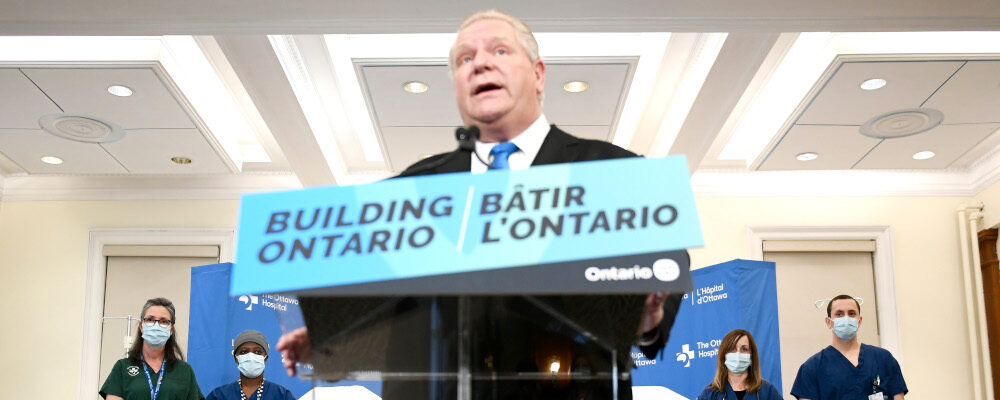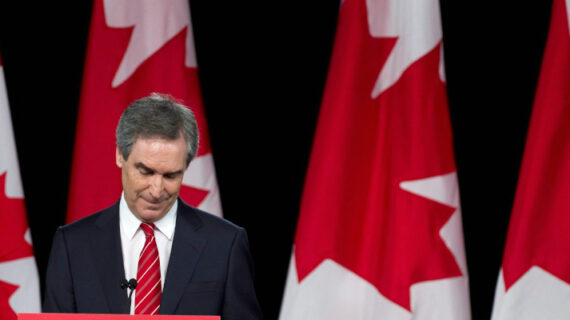The reaction to this week’s announcement from Ontario Premier Doug Ford that his government is expanding the role of private delivery within the province’s publicly-funded health-care system was swift and predictable. We heard various claims that it reflects a “purely ideological path” and a “fatal threat” to public health care that will ultimately risk lives.
The real story here though isn’t the Ford government’s ideological fervour. It’s actually the growing ideological convergence—from the NDP government in British Columbia to the United Conservatives in Alberta to the Legault government in Quebec and now the Progressive Conservatives in Ontario—around the need to leverage private diagnostic and surgical capacities to address pandemic-induced backlogs in the short term and prepare for demographic pressures on health-care services over the long term.
These governments have each come to their own pragmatic conclusion that the supply-demand quandary at the heart of Canada’s health-care woes can no longer be met merely by rationing through backlogs and waitlists. We need surge capacity.
Ontario’s diagnostic and surgical backlog isn’t a new development. The government estimates that it was roughly 200,000 people even prior to the pandemic. But it increased markedly at the height of the pandemic as the province’s health-care system reallocated its capacity and resources to deal with the crisis. The province’s Financial Accountability of Office estimated in a 2021 report that it could take three years to clear the pandemic-induced backlog that resulted.
There’s reason to believe however that these even estimates may understate the problem. Delays in diagnostic testing underplay the magnitude of incipient health-care demand. There was also a problem with self-reporting during the pandemic. The Quebec government, for instance, reported a 24-percent drop in requests to be placed on a surgical waitlist during the pandemic compared to non-pandemic years. The net result is what’s become described as an “invisible waitlist” and the “crisis behind the crisis” in the context of the pandemic.
Provincial governments started to roll out plans to deal with these growing backlogs as early as spring 2020. The plans typically involved some combination of more public funding, expanding the number of surgeries and tests within the public system (including running MRI machines and operating rooms on evenings and weekends), and leveraging private diagnostic and surgery capacity in particular areas such as cataracts, hips, and knees.
The Ford government’s initial plan to cut its backlogs was an outlier among the provinces for its limited use of private provision. As I wrote in a policy brief with former BC Premier Gordon Campbell in February 2022: “The provincial government’s plan essentially aims to clear these backlogs without drawing any surge capacity into the system.”
This stood in stark contrast with other provinces, including the NDP government in British Columbia which first announced its plan to leverage private delivery in May 2020. The province’s Surgical Renewal Plan specifically committed to “increase capacity at contracted private surgical clinics that agree to follow the Canada Health Act and not extra bill patients.”
It’s worth noting that this is essentially the same promise since made by the Ford government. Its press release quotes the premier himself: “Our government is taking bold action to reduce wait times for surgeries, all while ensuring Ontarians use their OHIP card to get the care they need, never their credit card.”
Notwithstanding the rhetoric from unions and left-wing academics, it’s difficult to argue that the Ford government is driven by a hard-right, anti-public health-care ideology if it’s merely matching an NDP government’s plan more than two-and-a-half years later.
The real story may be less pleasing to ideologues and partisans, but it doesn’t make it less true. These governments with different priorities and preferences have come to the same conclusion: we need to expand health-care supply to meet demand and it would be irresponsible to forgo private diagnostic and surgical capacity solely for ideological reasons.

There are legitimate questions about billing, staffing, and standards between public and private delivery, but these are mostly technocratic undertakings. They can be easily solved through a combination of regulation, funding conditions, and market forces. Ontario isn’t the first jurisdiction in the world to confront these elementary questions. The government may even consult with other provinces as well as international peers on how best to introduce greater private provision without undermining the public health-care system.
The key point though is that the lazy critique that the Ford government is comprised of right-wing dogmatists hellbent on eroding the principle of universal health care simply belies the facts. Its plan is run-of-the-mill stuff that should help to dig the province out of its pandemic-induced hole without confronting the Canada Health Act and more fundamental questions about how we finance and deliver health care in Canada on a more efficient and sustainable basis.
Health-care reform won’t be achieved without any opposition. There are of course certain groups and voices who are committed to protecting the failing status quo due to a combination of ideology and self-interest. But the conditions for reform have never been greater and the ad hominem attacks have never been weaker. The Ford government should be lauded for its pragmatic, common-sense steps to address Ontario’s diagnostic and surgical backlog—even if just it’s borrowing from its provincial peers, including progressive ones, elsewhere in the country.




